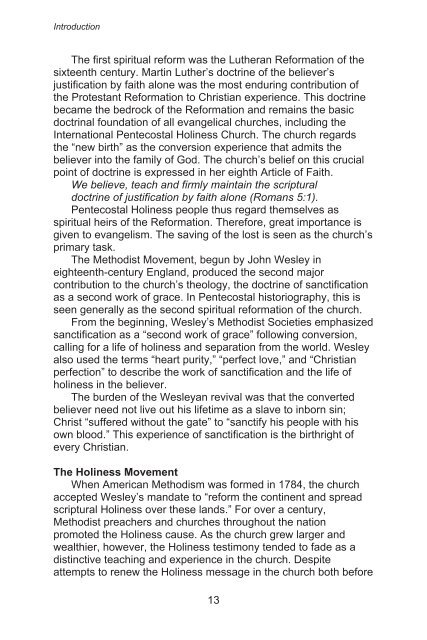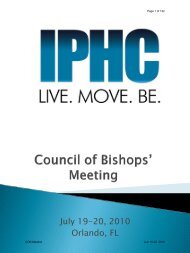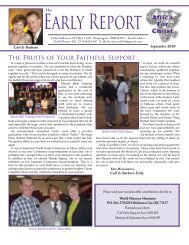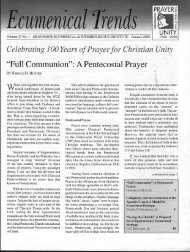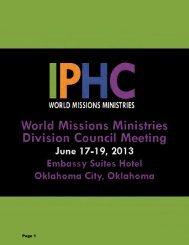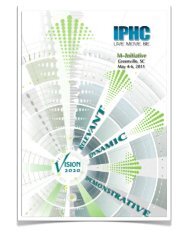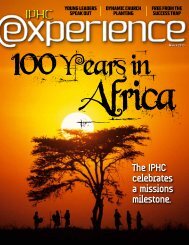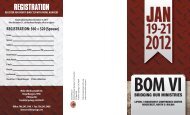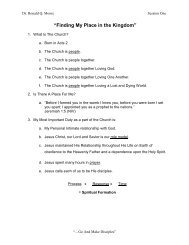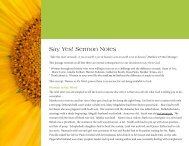IPHC Church Manual - Extension Loan Fund
IPHC Church Manual - Extension Loan Fund
IPHC Church Manual - Extension Loan Fund
Create successful ePaper yourself
Turn your PDF publications into a flip-book with our unique Google optimized e-Paper software.
Introduction<br />
The first spiritual reform was the Lutheran Reformation of the<br />
sixteenth century. Martin Luther’s doctrine of the believer’s<br />
justification by faith alone was the most enduring contribution of<br />
the Protestant Reformation to Christian experience. This doctrine<br />
became the bedrock of the Reformation and remains the basic<br />
doctrinal foundation of all evangelical churches, including the<br />
International Pentecostal Holiness <strong>Church</strong>. The church regards<br />
the “new birth” as the conversion experience that admits the<br />
believer into the family of God. The church’s belief on this crucial<br />
point of doctrine is expressed in her eighth Article of Faith.<br />
We believe, teach and firmly maintain the scriptural<br />
doctrine of justification by faith alone (Romans 5:1).<br />
Pentecostal Holiness people thus regard themselves as<br />
spiritual heirs of the Reformation. Therefore, great importance is<br />
given to evangelism. The saving of the lost is seen as the church’s<br />
primary task.<br />
The Methodist Movement, begun by John Wesley in<br />
eighteenth-century England, produced the second major<br />
contribution to the church’s theology, the doctrine of sanctification<br />
as a second work of grace. In Pentecostal historiography, this is<br />
seen generally as the second spiritual reformation of the church.<br />
From the beginning, Wesley’s Methodist Societies emphasized<br />
sanctification as a “second work of grace” following conversion,<br />
calling for a life of holiness and separation from the world. Wesley<br />
also used the terms “heart purity,” “perfect love,” and “Christian<br />
perfection” to describe the work of sanctification and the life of<br />
holiness in the believer.<br />
The burden of the Wesleyan revival was that the converted<br />
believer need not live out his lifetime as a slave to inborn sin;<br />
Christ “suffered without the gate” to “sanctify his people with his<br />
own blood.” This experience of sanctification is the birthright of<br />
every Christian.<br />
The Holiness Movement<br />
When American Methodism was formed in 1784, the church<br />
accepted Wesley’s mandate to “reform the continent and spread<br />
scriptural Holiness over these lands.” For over a century,<br />
Methodist preachers and churches throughout the nation<br />
promoted the Holiness cause. As the church grew larger and<br />
wealthier, however, the Holiness testimony tended to fade as a<br />
distinctive teaching and experience in the church. Despite<br />
attempts to renew the Holiness message in the church both before<br />
13


